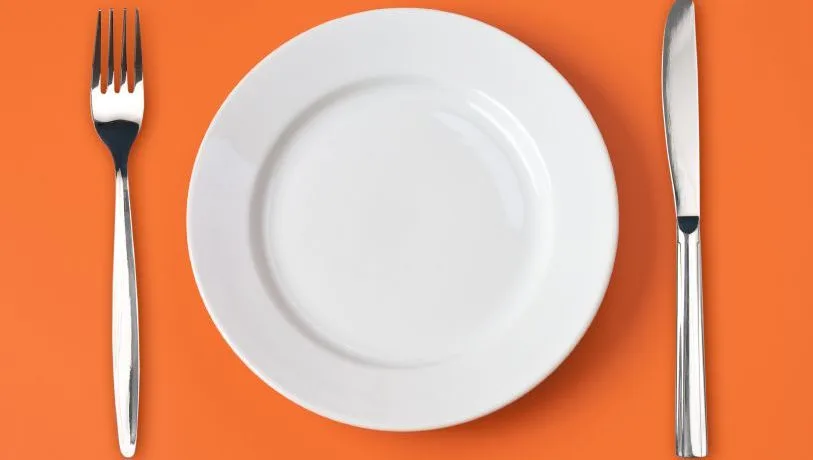Intermittent fasting (IF) has become an incredibly popular diet strategy in recent years. But what exactly is IF, and how does it promote weight loss? In this post, we’ll explore the science behind intermittent fasting as well as the practical art of implementing it into your lifestyle. Read on to unlock the powerful fusion of knowledge and action that makes IF so effective!

Introduction
Intermittent fasting involves alternating between periods of fasting and eating. Rather than limiting what you eat, it focuses on when you eat by restricting your eating window. The two most common IF approaches are the 16/8 method, where you fast for 16 hours and eat during an 8-hour window, and the 5:2 method, where you eat normally 5 days a week and fast or restrict calories for 2 days.
Research increasingly supports the effectiveness of IF for weight loss and overall health. By giving your digestive system a break from constantly processing food, IF allows your body to more effectively burn fat, regulate blood sugar, and reduce inflammation. This blog post will explore both the science behind how IF promotes weight loss as well as the lifestyle factors that make it sustainable. Get ready to become an IF expert!
Understanding Intermittent Fasting
Intermittent fasting involves cycling between periods of fasting and eating. It’s distinct from the normal pattern of eating three meals a day plus snacks. There are several different types of intermittent fasting routines, so you can choose one that fits your lifestyle best.
The 16/8 method, also known as the Leangains protocol, is one of the most popular IF regimens. With this approach, you fast for 16 hours each day and restrict food intake to an 8-hour window. For example, you might skip breakfast and eat only between noon and 8pm. Many people find this method simple and easy to stick to in the long term.
Alternate day fasting has you alternating between fasting days where you eat just 25% of your normal calorie intake and feasting days with no food restrictions. The 5:2 diet is a modified version of this, where you eat normally 5 days a week and limit yourself to 500-600 calories the other 2 days.
No matter the specific routine, intermittent fasting works by allowing your body to more readily access its fat stores for energy. During the fasting state, your lower insulin levels accelerate fat burning. Your cells initiate important repair processes and your brain releases growth hormones. Fasting periods also help regulate appetite hormones like ghrelin, supporting weight loss.
In addition to fat loss, studies associate IF with numerous health benefits, like improved blood sugar control, heart health, brain function and even longevity. It’s emerging as an exciting health and wellness intervention.
The Art of Practicing Intermittent Fasting
Embarking on an intermittent fasting plan takes some strategic lifestyle management. Here are some best practices to integrate IF smoothly into your routine:
- Start gradually – try doing a 12-hour fast for a few days, then progressing to 14 hours before attempting a full 16 hours. This allows your body time to adjust.
- Plan your fasting window – choose a schedule that works for your natural circadian rhythms. Common options are skipping breakfast or dinner.
- Stay hydrated – drink plenty of water, herbal tea and black coffee to curb hunger pangs. Avoid calorie-laden drinks.
- Pick nutrient-dense foods – break your fast with a healthy meal high in protein and good fats to feel satisfied.
- Listen to your body’s signals – be flexible and break your fast if you feel faint or unwell. Some people need to build up to longer fasting periods.
- Avoid overeating – it’s easy to overdo it after a fast, so pay attention to portion sizes and fullness cues when eating meals.
- Supplement if needed – speak with your doctor about taking a multivitamin and mineral supplements to support micronutrient intake.
Make IF a sustainable habit by being mindful of your fasting routine, not obsessing over calories, and customizing it to your lifestyle. Consistency is key!

The Science Behind Weight Loss
Intermittent fasting triggers several metabolic mechanisms that promote weight loss. Here’s an overview of the science:
By restricting eating to specific time windows, IF naturally helps you reduce your overall calorie intake. Limiting when you eat may boost diet adherence and prevent overeating at night. This calorie deficit is the primary driver of initial weight loss.
Fasting periods activate adaptive cellular responses that switch your body into fat burning mode. Lower insulin levels increase lipolysis – the breakdown of fat for energy. Growth hormone also increases during fasting, further promoting fat loss.
IF changes hormone levels to suppress hunger. Leptin and ghrelin are two key appetite hormones. Fasting causes leptin to drop and ghrelin to rise, which jointly signal your brain to reduce hunger.
By giving your digestive system an extended break from food, IF helps reset your metabolism to be more efficient. Your cells carry out vital repair processes and your mitochondria generate energy more effectively.
Multiple studies confirm intermittent fasting’s effectiveness for shedding pounds. A major review found that most randomized controlled trials demonstrated IF caused 3-8% greater weight loss over 3-24 weeks compared to simple calorie restriction.
Balanced Nutrition and Intermittent Fasting
While intermittent fasting focuses on when you eat, nutrition principles still apply to what you eat during non-fasting periods. To sustain energy and fulfill micronutrient needs, follow these tips:
- Include high-fiber complex carbs – vegetables, fruits, whole grains and legumes supply prolonged energy for fasting periods.
- Prioritize lean protein – fish, poultry, eggs, nuts and seeds support muscle retention and keep you full.
- Focus on healthy fats – nuts, seeds, avocado and olive oil provide essential fatty acids and vitamin absorption.
- Choose nutrient-dense foods – minimize processed and sugary foods in favor of whole, unprocessed options.
- Stay hydrated – drink water consistently throughout fasting and non-fasting times.
- Take a multivitamin – supplementary nutrients like magnesium, zinc and B-vitamins help offset nutritional gaps.
- Monitor energy levels – if you feel lethargic or unfocused, adjust your fasting routine or diet to optimize nutrition.
With a little planning, intermittent fasting can complement a balanced, nutritious diet for improved health on all fronts.

Intermittent Fasting and Your Lifestyle
One advantage of intermittent fasting is that you can tailor it to accommodate a wide range of lifestyles and dietary needs. Here are some tips:
- Busy professionals – choose a simple 16/8 routine and make your eating window fit around your work schedule.
- Athletes – time your eating periods around workouts for optimal performance and recovery.
- Students – schedule study sessions during fasting periods when energy lulls can increase focus.
- Vegans/vegetarians – supplement plant-based diets with protein shakes or beans to support lean muscle.
- Travelers – prepare fasting-friendly snacks like nuts and nut butters to stay on track.
- Shift workers – adapt your eating window as needed to sync with altered sleep schedules.
- Parents – get creative with meal planning so your family can share mealtimes during your non-fasting times.
Make IF flexible by planning ahead for special events or circumstances that disrupt your normal routine. Stay consistent on most days, then modify as needed to make fasting fit your real life.
Conclusion
Intermittent fasting offers a simple yet powerful weight loss tool by targeting when, not what, you eat. The science shows that IF boosts fat burning while curbing appetite by optimizing your hormones and metabolism. Plus, the flexibility of IF supports easy integration into any lifestyle.
Simply by fasting intermittently – whether it’s 16 hours a day or a few 24-hour fasts per week – you can kickstart substantial weight loss. Combine your fasting regimen with a balanced, nutrient-dense diet and active lifestyle for optimal health. Sustainable weight management has never been so straightforward.
I encourage you to give intermittent fasting a try to experience the transformative power of fasting fusion. This book is full of practical advice and evidence-based information to set you up for success. Reclaim your health and wellbeing with the amazing science of intermittent fasting!

Engage With Our Community
I hope this post has enlightened and inspired you to try intermittent fasting for yourself. To dive deeper, be sure to check out my other fasting-related content and sign up for my email newsletter. Let’s connect on social media and join in the conversation with our vibrant health and wellness community. When we share our journeys, we discover our true strength.
Thank you for reading this post, don't forget to subscribe to our free newsletter
!
